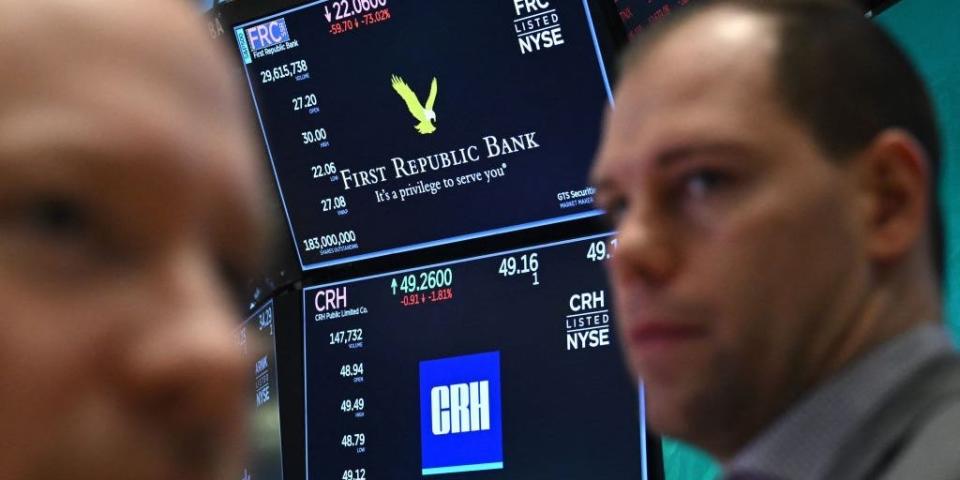The $30 billion reason for Wall Street to save First Republic ASAP

-
First Republic is on the edge, with the stock down another 41% on Wednesday. It’s now down 95% for the year to date.
-
The bank is seeking to sell assets and raise fresh capital to keep itself going.
-
First Republic’s rivals will end up paying for its struggles, whether it survives or gets taken over by the FDIC.
First Republic is racing to land a rescue deal.
The bank is getting hammered in the stock market again, with shares trading down as much as 41% on Wednesday, following reports that it is preparing to sell shares as part of a rescue plan.
To recap:
That’s part of the reason the stock is trading down so heavily, with the bank currently valued at a little more than $1 billion. Investors are essentially forecasting that the bank is close to worthless once those losses are realized.
First Republic is now trying to find a way to shift those assets to other banks without taking on a huge loss, as Gillian Tan and Matthew Monks at Bloomberg have reported. It could look to sell the loans for more than they’re worth, by wrapping in some equity-type instrument like warrants or preferred equity to give the buyers more upside.
The pitch, according to Hugh Son at CNBC, is essentially this: If First Republic is seized by the FDIC, those same banks will face a bill of $30 billion. That’s because the FDIC extracts a levy from healthy banks to help foot the bill for those that collapse.
So it’s better for those banks to come up with a rescue deal now, and potentially take a small loss, than let First Republic fail and end up paying out even more to the FDIC. These firms are already on the hook to the FDIC for the collapse of SVB and Signature Bank.
Liz Hoffman at Semafor notes that private equity could step in also, taking on some of First Republic’s problem assets, with banks taking on the rest. She estimates that that could cost the likes of JPMorgan and Bank of America $500 million each, if the banks took on the assets along the same lines that they stepped up with $30 billion in deposits in March. First Republic would then seek to sell shares to replenish its capital.
What’s clear is that the likes of JPMorgan and Bank of America will end up paying for First Republic’s struggles. It’s just a question of how much and how.
Read the original article on Business Insider
[ad_2]
Source link


